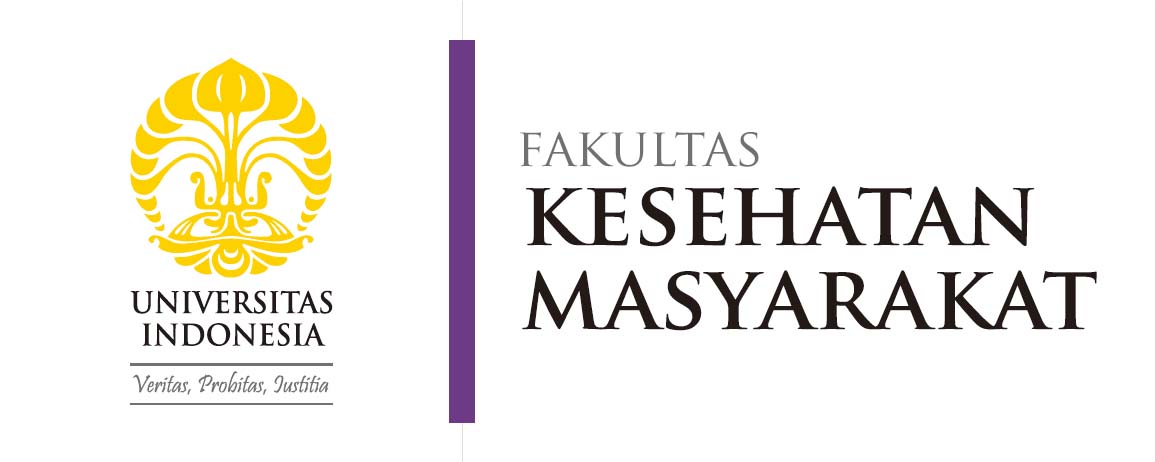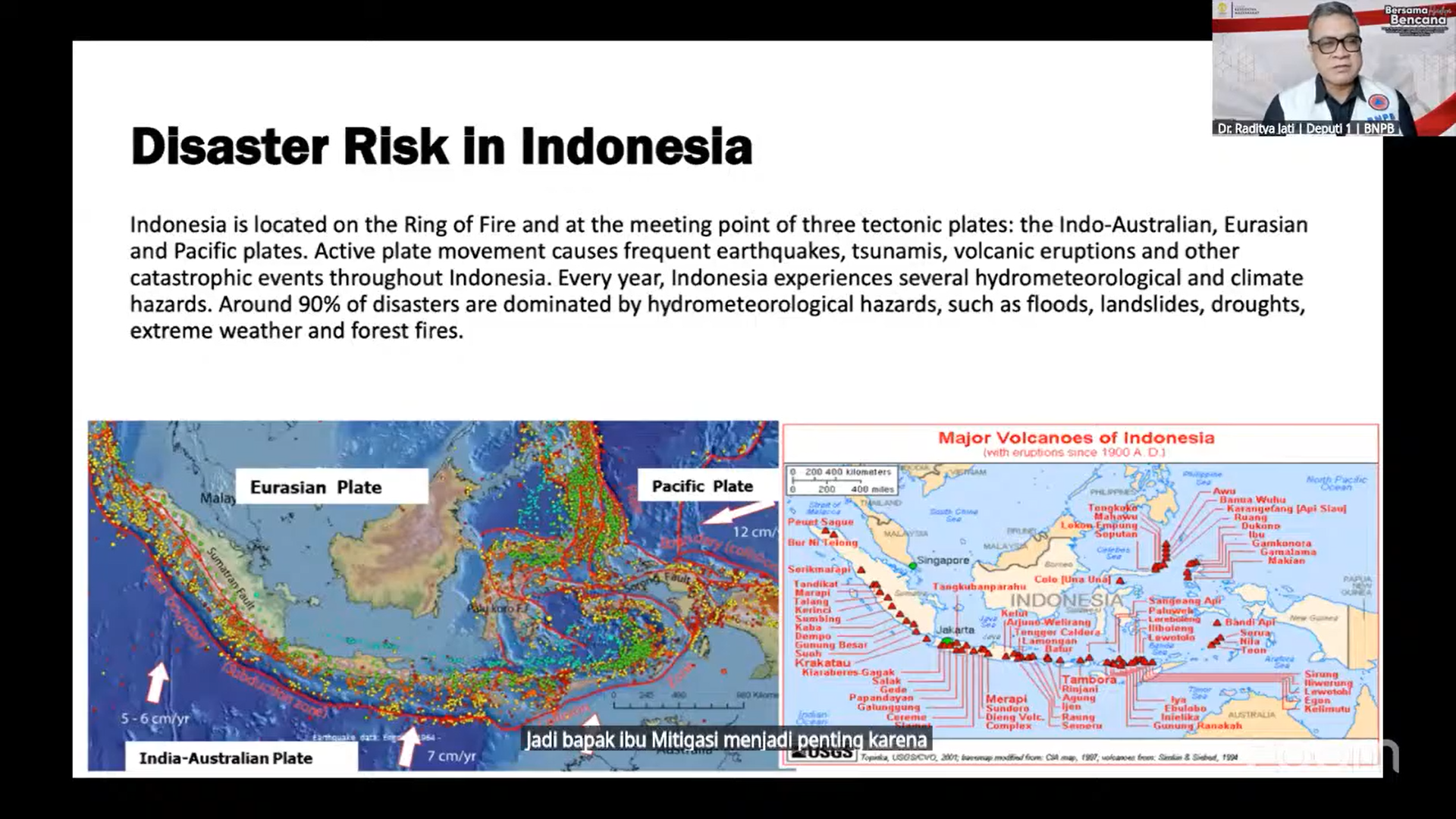The Faculty of Public Health (FPH) Universitas Indonesia (UI) once again held its 6th Online Seminar Series with the theme “Facing Disasters Together.” The event was organized by master’s students from the Occupational Health and Safety (OHS) program at FPH UI as part of the Disaster Environmental Health and Emergency Response course and was conducted via Zoom Meeting. The seminar was moderated by Fitri Kurniasari, S.K.M., M.K.K.K., Ph.D., Secretary of the Department of Environmental Health, who highlighted the strategic role of the private sector in the pentahelix system—a synergy of government, academia, community, media, and business—in disaster mitigation and emergency response efforts.
Prof. Drs. Bambang Wispriyono, Apt., Ph.D., Professor at the Department of Environmental Health FPH UI and course coordinator, stated that the seminar served as a form of applied learning aimed at encouraging master’s students to tackle challenges constructively and positively. “This seminar is designed not only for academic learning but also to enhance students’ managerial and leadership skills through organizing a national-scale event,” he said. The seminar attracted over 300 participants from various sectors, a reflection of the organizing committee’s strong leadership and event management capabilities.
Meanwhile, Vice Dean for Education, Research, and Student Affairs at FPH UI, Dr. Ir. Asih Setiarini, M.Sc., emphasized the seminar’s relevance given Indonesia’s high disaster risk. “In such a context, a strong synergy across all pentahelix elements is essential for effective disaster management,” she stated. She added that the event reflected the academic institution’s role in integrating interdisciplinary knowledge and broadening participants’ perspectives, particularly in the context of sustainable development and the national health system. Dr. Asih expressed appreciation to the 2025 OHS master’s students for their high level of dedication in organizing the seminar.
Indonesia’s geographic vulnerability, due to its location on the Ring of Fire and at the convergence of three major tectonic plates, makes it prone to earthquakes, tsunamis, volcanic eruptions, and hydrometeorological disasters. This was explained by Dr. Raditya Jati, S.Si., M.Si., Deputy for Systems and Strategy at the National Disaster Management Agency (BNPB), who noted that “90% of disasters in Indonesia each year are caused by hydrometeorological hazards such as floods, landslides, droughts, extreme weather, and forest fires.”
Dr. Raditya underscored the importance of the 2025–2029 National Disaster Management Plan (Renas PB) as a strategic guide for all stakeholders and introduced the Inarisk Personal application, which provides real-time disaster risk information to the public. He also stressed the need for sustainable resilience by integrating disaster risk management with climate change and development issues and promoting cross-sectoral collaboration for sustainable development. “To build disaster and climate resilience, we must step out of our comfort zones and broaden collaboration across sectors and backgrounds,” he stated.
Adding to the national policy perspective, Dr. Renauld Koswiranagara, a Field Emergency Medicine & Rescue Trainer affiliated with various humanitarian organizations, delivered insights on integrated disaster management systems. Drawing from his extensive field experience, Dr. Renauld emphasized that both natural and man-made disasters affect millions globally each year. “Major disasters occur almost daily worldwide, and those requiring international aid happen at least once a week,” he explained.
He highlighted the vulnerability of groups such as women, children, the elderly, persons with disabilities, and minorities in emergencies. In Mass Casualty Incidents (MCI), 75–85% of deaths occur within the first 20 minutes, making rapid team coordination crucial. He outlined ten emergency priorities, including initial assessments, emergency health services, food and sanitation, immunization, shelter, disease control, surveillance, human resources strengthening, and cross-sectoral coordination—stressing the need for multidisciplinary preparedness and an integrated approach to holistic disaster response.
This seminar not only strengthened interdisciplinary integration through the pentahelix model but also demonstrated the capacity-building efforts of FPH UI’s OHS master’s students in delivering strategic, science-based solutions rooted in Environmental Health and OHS principles. (DFD)

